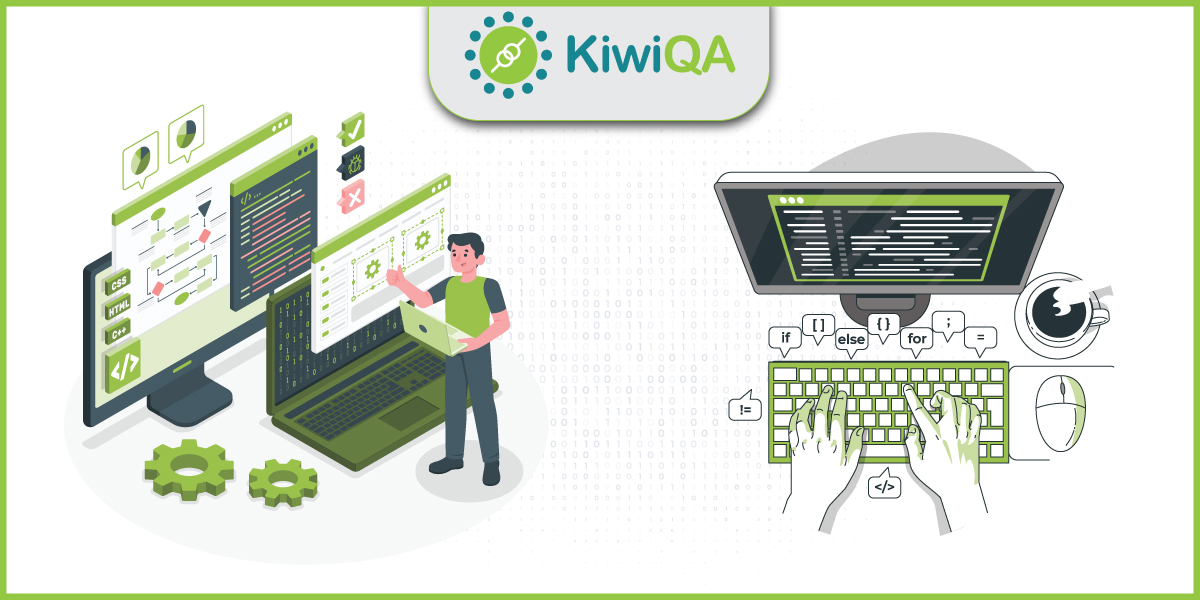Ultimate QA Checklist For Software Development

 KiwiQA
KiwiQAConsider a hypothetical scenario where a team has come up with a brilliantly executed product idea. Sounds exciting, right? What if we add that the product is released to the end-users without performing in-depth testing ? Such a release would be disastrous for the company and their potential users might turn their attention to competitor products!
Software enterprises, irrespective of the scale or size, must give equal emphasis to quality assurance else there is a high probability of a mediocre quality product being released to the target customers 🙁 Scaling up the QA teams might require significant investment and effort which is why many product companies opt for QA consulting services offered by proven companies like KiwiQA.
Though QA consulting provides a lot of benefits to the product enterprises, choosing the right QA outsourcing partner can be a daunting task. Apart from that, a seamless communication channel must be established for effectively managing an experienced team of outsourced QA experts.
In this blog, we jot down the integral points that make up an ultimate QA checklist. The pointers mentioned in the blog will help in crafting a super-reliable QA testing strategy.
Here is a breakdown of the tasks that make up the QA Checklist for Software Development:
Every project is unique, hence it is important to evaluate the testing requirements from all the possible perspectives. Achieving 100 percent automation is a myth, which is why different teams (including test architects) need to be involved to zero-in on the role of internal & external QA personnel, possible test scenarios that can be automated, approximate team size, and more.
The availability of the expertise within the internal & external teams must be evaluated to arrive at the best-suited framework and/or tool for scalable & reliable testing. Cloud testing or in-house testing is another important point that must be a part of the checklist.
Also Read – In-house Software Testing Vs. Outsourcing Software Testing
Once the basic essentials have been discussed as a part of the ‘Project Overview’ phase, it’s time to set the ball rolling! Planning is nothing without thorough execution.
The kick-off meeting must involve major project stakeholders like QA managers, QA engineers, test architects, product managers, and any other member who is connected to the project. The focus of this stage is arriving at decisions for testing frameworks, tools, and communication establishment between internal & external QA members.
A perfectly balanced test plan comprising manual testing and automation testing must be a part of the checklist. Metrics that define the ROI on test automation must be set in place, so that key stakeholders can measure the effectiveness of test automation vis-à-vis the investments made to realize test automation.
The collective experience and expertise of the members involved in the kick-off meeting will be helpful in shortlisting automation tools, automation frameworks, testing providers, etc. Since cloud testing is a solution to realize secure, scalable, and reliable testing; it becomes important to evaluate different providers of cloud testing.
Testing on mobile devices should be an integral point of the discussion. Real-device testing becomes integral in case the application (or document) being developed is built for a mobile-first experience. Test script maintenance, ideal test coverage, and parameters for tracking automation progress are decided by the end of this meeting. An expert QA Consulting vendor will add a significant value in this particular step.
Also Read – How To Plan A Foolproof Performance Testing Plan?
There is a huge difference between tools and frameworks when it comes to automation testing. Automation tools can broadly be classified into two major categories – Code-based automation tools and codeless (or no-code) automation tools.
In the interest of time, we are not deep diving into the plethora of tools available in the market! Both code-based and code-less automation tools have their own set of pros & cons and the key stakeholders need to decide the right tool based on the expertise of the QA team.
A combination of code-based and code-less automation tools is also possible since many code-based test automation tools provide integration with code-less tools. When choosing a tool, you need to keep costs, test maintenance, scalability, security, reporting, and reliability into account.
Based on the project requirements, the QA provider must give inputs on the best-suited test automation framework. Some of the popular types of test automation frameworks are:
The choice of framework and tools will be a key factor in cutting down the test execution time. A QA consulting vendor (like KiwiQA) that has expertise with different testing tools and frameworks can help in making the best choice that works in favor of the project.
Also Read – Why To Choose Selenium Framework For Automation Testing?
Since every project is different, prioritizing the test type becomes a big priority. A combination of manual testing and automation testing is a necessity, as human intelligence in testing is still required when performing exploratory testing.
Having said that, the QA vendor and internal project stakeholders must prioritize over other forms of testing – Performance testing, load testing, cross browser testing, accessibility testing, and more. Let’s take an example of an e-commerce portal. What if the page-load time significantly increases during the sale period? It would not only result in loss in sales but could also damage the brand reputation. Here cross browser testing, mobile app testing, and performance & load testing must be considered at a high priority.
Testing the end-product for responsiveness and UI uniformity across different browsers, platforms, and devices will yield short-term and long-term gains! Prioritizing the testing types based on the type and scale of product must be a part of the QA checklist.
Also Read – Checklist To Test Your Mobile App Successfully
Communication is a key when it comes to QA teams. The complexity multiplies when you have to manage the internal QA team as well as the QA vendor’s team. The right mix of project management tools, bug tracking tools, and communication tools must be used to ensure that every aspect of the QA process is executed in a smooth manner.
Reports must also include the key KPIs of automation testing so that relevant actions can be taken in case there is any slippage on the QA front.
Enterprises (large or small) must consider QA (Quality Assurance) & software testing a high priority like product development. Engaging with an experienced QA vendor becomes important in scenarios where there is dearth of testing talent within the team.
The QA checklist discussed in this blog can be a great starting point for companies looking to leverage the expertise offered by QA consulting companies in order to expedite the TTM!
Subscribe to our newsletter for some hand-picked insights and trends! Join our community and be the first to know about what's exciting in software testing.
Welcome to the testing tales that explore the depths of software quality assurance. Find valuable insights, industry trends, and best practices for professionals and enthusiasts.

Fill out and submit the form below, we will get back to you with a plan.
 CRN:
22318-Q15-001
CRN:
22318-Q15-001 CRN:22318-ISN-001
CRN:22318-ISN-001 CRN:22318-IST-001
CRN:22318-IST-001